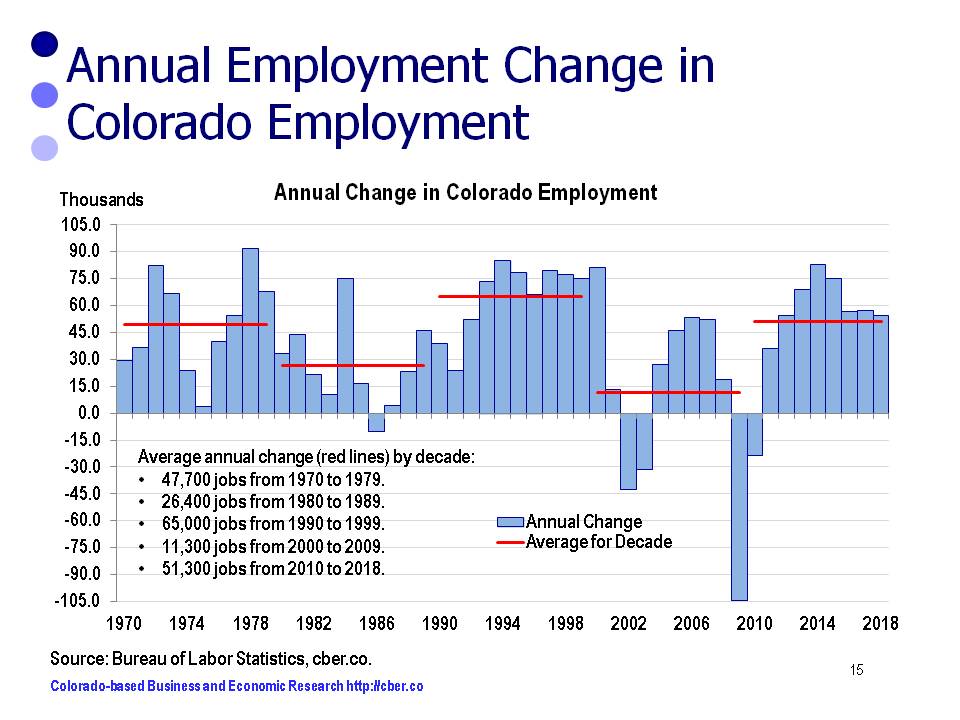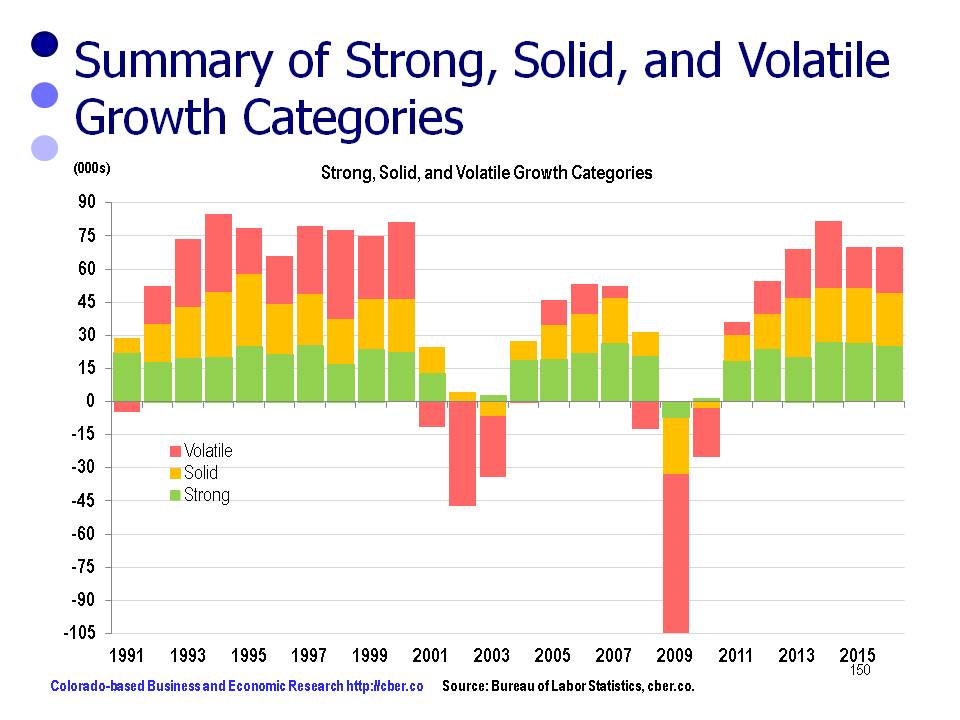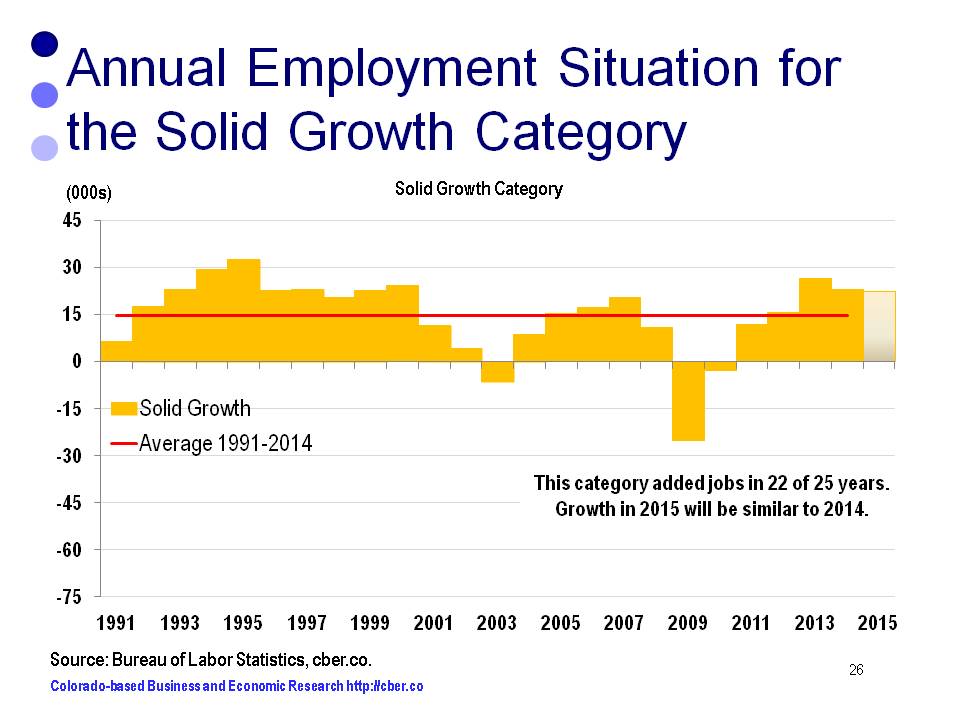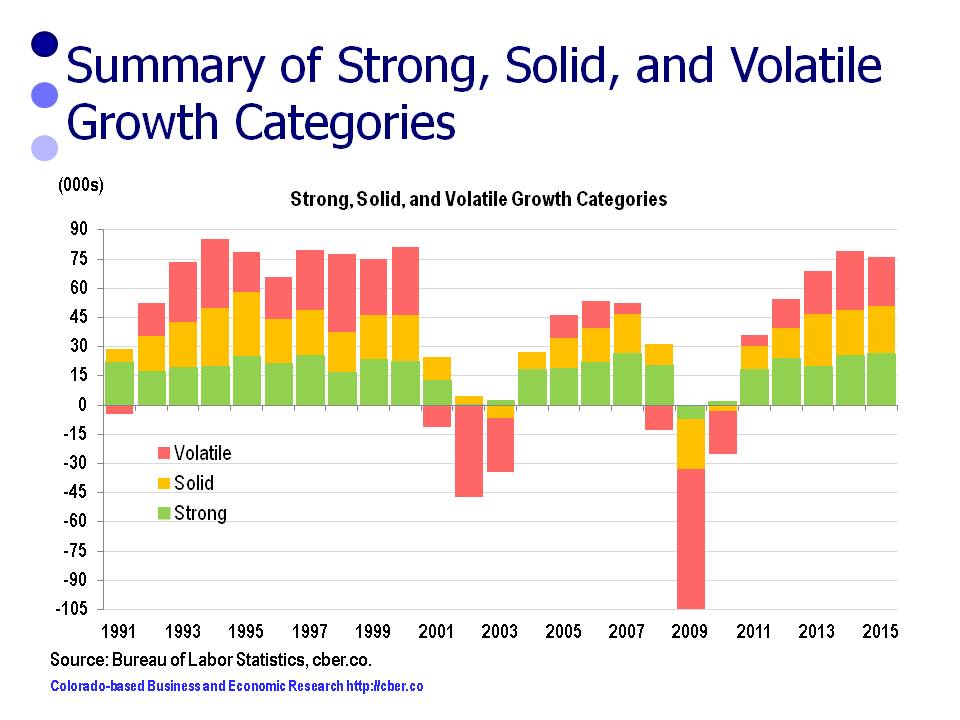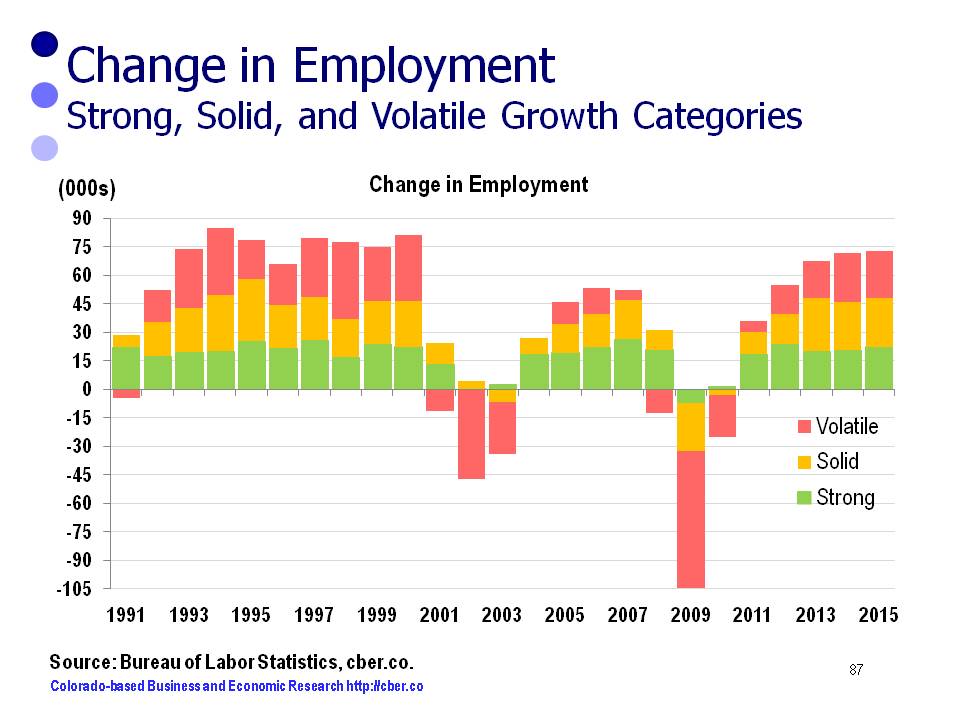The best description of the 2018 Colorado economic forecast is steady.
After adding jobs at a rate of 2.2% in both 2016 and 2017, Colorado will add jobs at a rate of 2.0% in 2018. Given all the moving pieces in an economy, that is steady!
Watch for the following on Colorado’s economic front in the coming months.
- Colorado will benefit from stable global and U.S. real GDP growth.
Net migration will be comparable to the last two years. - The Colorado inflation rate will increase; it will be about a point greater than the U.S. rate.
- The Colorado economy is not operating efficiently because the unemployment rate is too low.
- The Colorado real GDP growth rate will be greater than the U.S. rate and will be driven by health care, real estate, and the extractive industries.
- The state’s economic growth would be slowed if the Fed Funds rate is increased 3 times in 2018.
- Manufacturing growth will be driven by a handful of larger companies.
- Retail trade is evolving. Retail sales will remain strong.
- The 2018 legislative session will be dicey as legislators struggle to address social issues, congestion, transportation issues, the state pension fund, and how much funding should be allocated to education.
- The state’s information sector is quietly evolving; there will be minimal job growth, but high value added.
- The growth of the state will be constrained by the lack of workers to complete construction projects.
- There are three economies in Colorado – Front Range, micropolitan areas such as Durango, and rural Colorado. It is an understatement to say that many rural counties are significantly challenged.
- Amazing things are happening at DIA and the area surrounding it – Welcome Gaylord!
- The lack of snow in December and early January has left its mark on the state’s ski areas. It would be worse if they had not invested in snowmaking.
There will be ups and downs, but 2018 will be a good year! It will be steady!
For more details about the Colorado economy check out the cber.co 2018 Colorado economic forecast on this website.
